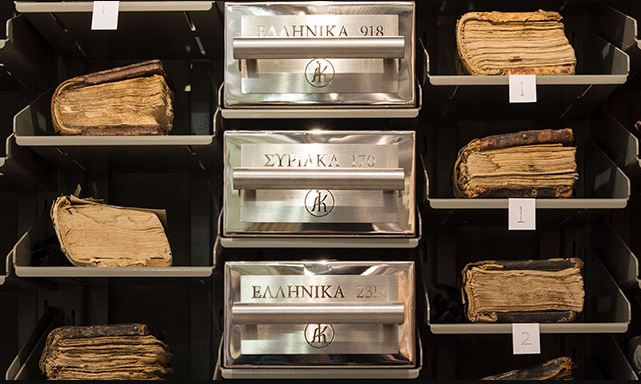Located on the sun-baked slopes of Mount Sinai, this ancient World Heritage Site of St. Catherine is the oldest permanent monastery in the world.
With a history dating back to the 16th and 17th centuries, the Greek Orthodox monastery was able to survive without being attacked by bandits, under the constant and careful supervision of monks.
This left its historic buildings and precious relics completely intact, making the institution's library a treasure trove of irreplaceable texts with a collection of early codes and manuscripts second only to the Vatican in size.
With such a vital repository of ancient manuscripts, works of art and architectural structures to preserve the monastery, a British non-profit organization, St. Catherine's Foundation, was established under the patron saint of Prince Charles.
Working in partnership with the Ligatus Research Center at London University of the Arts, the Foundation ordered a set of steel boxes to store and transport rare and valuable documents from the ancient library.
Part of a huge conservation project to protect manuscripts for future generations, these revolutionary stainless steel cases greatly improve the durability and safety of documents during transport and storage.
Dmitros Dondos, Chairman of the Foundation's Board of Trustees, explains that the decision to make these stainless steel manuscript cases was based on the “inert, non-corrosive properties of the material, free of acid emissions.
“These safes provide excellent mechanical protection in the event of an impact if dropped or subjected to physical stress during transport. They also have high wear resistance, ”says Dimitros.
It also uses an "oxygen starvation" system, which, in combination with the physical resistance of the safes, provides critical protection against possible fire.
The design of the hull was drawn up by the Ligatus Research Center together with Professor Nicholas Picvoad, one of the chief designers. For his research team, the decision to go beyond the selection of materials made in traditional manuscript cases was based on certain key factors.
Firstly, in the extremely dry conditions of the Sinai Desert, more traditional hull designs will deform, while steel is not affected by low humidity and retains its structure. The safes also use precision manufacturing technologies borrowed from the metallurgical industry, allowing for quick and accurate fabrication of equipment.
Professor Piquoad's team concluded that while the cost of making the stainless steel box was much higher than traditional alternatives, their superior strength and durability, as well as their nearly infinite lifespan, made these manuscript cases more competitive in price.
With the cases currently in service, the properties underlying their stainless steel construction ensure that many future generations can marvel at the irreplaceable historical artifacts of St. Catherine.




